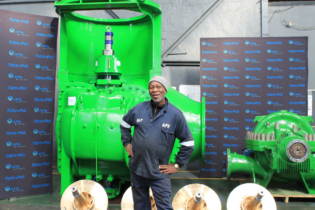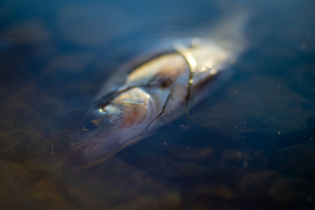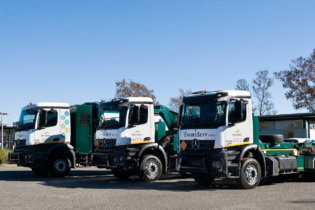Next month Cape Town plays host to what is fast becoming sub-Saharan Africa’s leading event dedicated to the power generation industry. Over 2,000 industry heavyweights will descend on the Mother City from 17 – 19 March to discuss current and future power-generating trends as well as the needs and resources within this region of the worldat Power-Gen Africa 2014.
One of the exhibitors at this year’s event is IWC – South African leaders in cooling towers and cooling solutions in Africa, offering fully integrated solutions, from cooling towers to glass-reinforced plastic (GRP) manufacturing and plate heat exchangers (PHE) supplied by SONDEX. The company’s range of products are packaged cooling towers, large field erected-and-mechanical draught cooling towers, natural draught cooling towers as well as the refurbishment thereof. Currently IWC is constructing two four-cell mechanical induced-draft concrete cooling towers for Eskom’s Kusile Power Station in Witbank, South Africa. These cooling towers form part of the auxiliary cooling system, which will supply cooling water primarily for the turbine and boiler plant auxiliaries as well as compressor cooling and certain other items of the plant. Each of the cooling towers is designed for a flow rate of 12 000 m³/h and has a heat rejection of 90 MW. IWC is currently in the throes of commissioning the auxiliary cooling system for the Medupi Power Station outside of Lephelale in Limpopo province. Here IWC has not only designed and constructed the cooling towers but has also designed and supplied the process equipment needed for the auxiliary cooling requirements. When completed the Medupi power plant will have six units and require a total of approximately 26 500 000 l/h of auxiliary cooling water for the turbine and boiler auxiliaries as well as some other consumers in the station. When asked what IWC can offer power generation companies, company MD Roger Rusch said IWC specialises in making the cooling systems in power plants more efficient, which means lower condensing temperatures, which in turn results in an improvement in the thermodynamic cycle of the power plant. “We are experts in cooling tower refurbishment that can extend the operating life of power plant cooling towers for another 25 plus years and with properly designed thermal upgrades improve efficiencies resulting in power plants being able to produce more power for less coal,”he added.But this comes with its own challenges as when undertaking refurbishment work on operational power plants cooling towers cannot be taken out of service without major production losses. To address this IWC has patented its own on-line refurbishment technology. Mr Rusch said IWC has successfully used this technology in a number of natural draught cooling tower refurbishment projects – including projects for SASOL in Secunda and EnergyAustralia in Australia.
In the case of the SASOL refurbishment, this meant that only a small area of the cooling tower could be isolated at any given time, around 10%, in order to ensure that there was no significant thermal performance deterioration, which would affect SASOL’S production. Explaining the process, Mr Rusch said: “All you are really doing is isolating a relatively small portion of the cooling tower at a given time, finishing that section of it and moving on. As you move on through the tower you improve the efficiency with each piece that you’ve worked on so eventually you get to a point where you have very little negative effect on the cooling tower and that allows you to complete the work, improving the performance of it as you go along.” Looking to the future, Mr Rusch said IWC has recently launched a fibreglass production facility. This facility is capable of constructing large diameter tanks and pipes as ducting of all vital components in the process of Flue Gas Desulfurization or FGD. This gives IWC the ability to assist existing clients as well as any future partners with the construction of the necessary equipment needed to meet Environmental requirements as outlined in the Air Quality Act No 39 of 2004.






